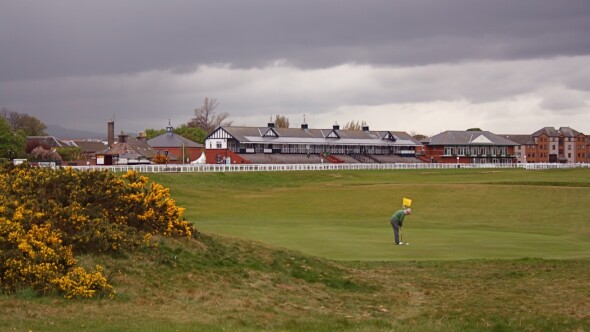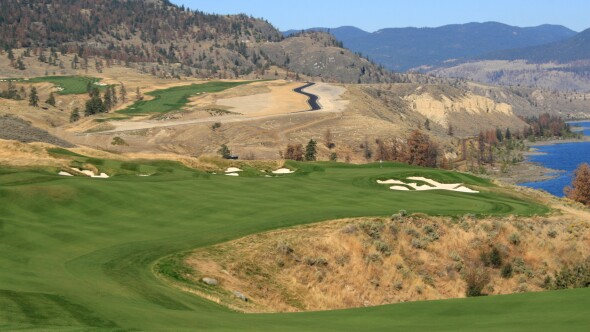The links of Ayrshire along the west coast of Scotland were created for well heeled vacationers traveling by train from Glasgow and Edinburgh more than a century ago.
Many of the railway stops have been lost to history, but the cherished links live on. History bonds several of the region's best links to the Open Championship.
The Old Course at Prestwick Golf Club hosted the Open 24 times from 1860-1925. The modern inclusion of Turnberry Resort's Ailsa Course, site of the historic "Duel in the Sun" between Jack Nicklaus and Tom Watson in 1977, introduced the world to its stunning charms. The Old Course at Royal Troon Golf Club continues to prepare for its ninth Open Championship in 2016.
Of the dozen or more links golf courses in Ayrshire, here are the five best places to play for a trip to remember:
Ailsa Course at Turnberry Resort, Turnberry
There's no more scenic links in the world than this grand par-70 course, home to one iconic landmark after another. Ailsa Craig, a giant rock island, sits 10 miles offshore in the Firth of Clyde. The Turnberry Lighthouse, built in 1873 along the rocky coast, remains visible throughout the day. Epic holes no. 9 through no. 11 get up close and personal. A war memorial in the shape of a cross stands above the 12th green, honoring those who died during the resort's stints as a military airbase during the two World Wars. Greg Norman's 1986 Open Championship title and Nick Price's 1994 victory were good, but they were not as dramatic as Stewart Cink's playoff victory over an ageless Watson in 2009. I've not played Turnberry's Kintyre Course, but I've been told it's definitely worth a look as well.
Old Course at Prestwick Golf Club, Prestwick
This quirky 6,908-yard links hosted the first dozen Open Championships from 1860 to 1872. Even though it hasn't held one in nearly 90 years, only the Old Course at St. Andrews has hosted more majors than this venerable Scottish club. Prestwick's original 12-hole routing created in 1851 extended to 18 holes in 1882. The first hole runs along the railway, setting the stage for a demanding round among the dunes. Hiring a caddie or playing with a member remains an absolute must to solve several mysterious holes. Otherwise, the blind shots on the par-5 third hole, the par-3 fifth hole and the par-4 17th hole will trick first-timers into course mismanagement. Even with the proper instruction, there's no guarantee of good fortune. Explore the clubhouse to discover a trove of old books, pictures and artifacts after the round.
The opening nine holes -- the first six hug the shore -- gently ease into the round on this 7,202-yard par-71 course, which dates to 1888. It's the more demanding loop that returns to the clubhouse where championships are won and lost. Players who hit the "Postage Stamp" green at no. 8 -- a pint-sized par 3 of 123 yards -- should celebrate with a pint after the round. Although some gorse is being cut back prior to the tournament, a sea of this yellow prickly bush still lines the par-4 11th hole called "The Railway," where tracks run up the right side.
Western Gailes Golf Club, Irvine
Founded in 1897, Western Gailes Golf Club might be the most linear layout in golf. Sandwiched on a mere 130 acres between the railroad line and the sea, the 6,714-yard course never stretches more than two holes wide. The routing heads north for the first four holes before turning around with the next nine holes along Irvine Bay. The final five reverse field, running parallel to the tracks back toward the centrally located clubhouse. This Open qualifying site plays every bit like a major championship venue when the wind kicks up. There's very little gorse and few blind shots to fret over at Western Gailes. Greens nestle naturally into the dunes, and burns protect four of them.
Dundonald Links, Irvine
Located across the tracks from Western Gailes, this 7,100-yard modern design that was selected to host the 2017 AAM Scottish Open cannot be considered a true links since it is not located on the shore. Phillips, best known for his work at Kingsbarns in Scotland, sculpted wide fairways through man-made dunes. These generous corridors give way to difficult greens surrounded by penal bunkers. Burns protect several holes at Dundonald Links, fronting the greens at no. 9 and no. 18. The 13th and 16th holes run parallel to the train tracks. The signature swing comes on the 11th tee box, a fun 120-yard par 3 over a marsh. Take an extra club, not only for the elevated green but also to combat the wind coming off the water.


























